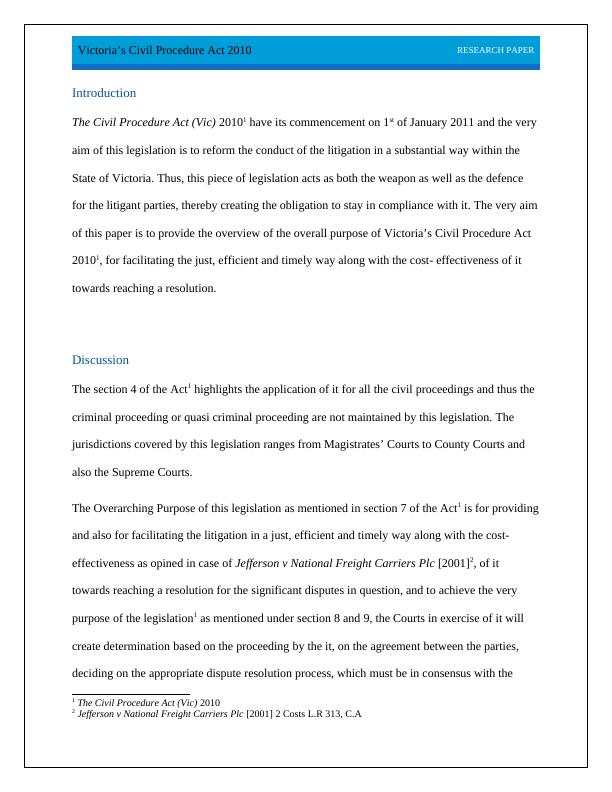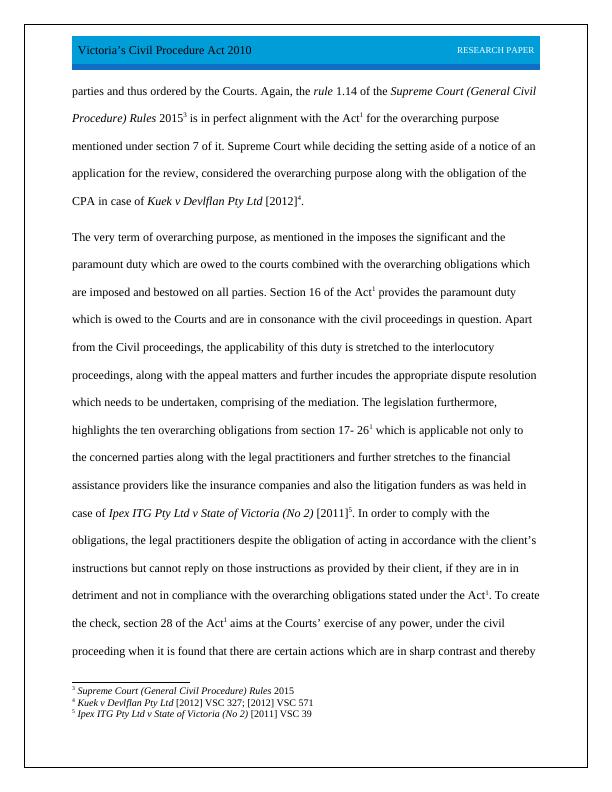Victoria’s Civil Procedure Act 2010
Write a research paper of 2,000 words worth 50 percent on either the purpose of Victoria's Civil Procedure Act 2010 or the appropriateness of litigation in neighborhood disputes, with reference to case law, literature, and statutes.
10 Pages3233 Words61 Views
Added on 2023-01-17
About This Document
This research paper provides an overview of Victoria’s Civil Procedure Act 2010, its purpose, application, overarching obligations, alternative dispute resolution, document management, and case management. It discusses the impact of the Act on litigation in the State of Victoria.
Victoria’s Civil Procedure Act 2010
Write a research paper of 2,000 words worth 50 percent on either the purpose of Victoria's Civil Procedure Act 2010 or the appropriateness of litigation in neighborhood disputes, with reference to case law, literature, and statutes.
Added on 2023-01-17
ShareRelated Documents
End of preview
Want to access all the pages? Upload your documents or become a member.
Options in Civil Procedure
|9
|1992
|305
Importance of Court-Ordered Mediation in Civil Procedure
|5
|698
|467
Judgement Analysis: Liability of Respondents and Alternative Dispute Resolution
|9
|2279
|360
International Commercial Litigation: General Case Scenarios and Conventions
|6
|1312
|136
ASIC v Flugge (No 2) [2017] VSC 117 - Analysis of Breaches of Directors' Duties under the Corporations Act 2001
|20
|1871
|81
ASIC v Whitlam: Breach of Director Duties in Australia
|10
|2561
|447



